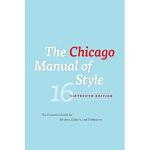Continuing our discussion of cross-references, this post explores additional references in the form of see under and see also under. When a cross-reference directs readers to a subentry another a main heading, see under may be used. The use of “under” indicates that the term will be found explicitly as a subheading below the main heading indicated.
- silver coins. See under currency
- Pride and Prejudice. See under Austen, Jane
If the cross-reference is to a subentry under another main heading, the words see also under may be used. This cross-reference guides the reader to related and additional information that appears verbatim.
- Maya: art of, 236-43; cities of, 178;
- present day, 267. See also under Yucatan
For more information about the formatting of cross-references, refer to The Chicago Manual of Style. For more information about the services provided by the author of this blog, see the Stellar Searches LLC website, http://www.stellarsearches.com
